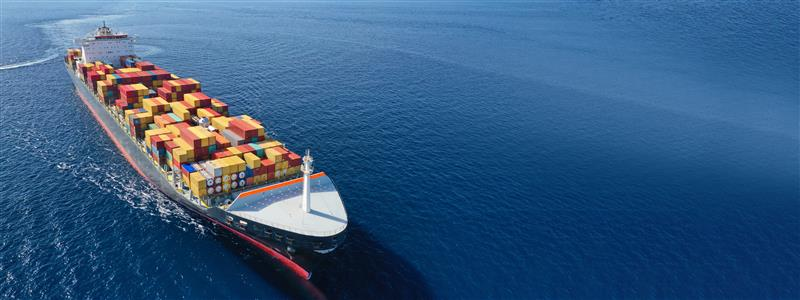World Maritime Day Commemoration
By Derrick Okadia
Jacques Yves Cousteau stated that, “the sea, once it casts its spell, holds one in its net of wonder forever. Now we’re teaching machines to feel that same pull‟. Contemporaneously, we are in the era of Maritime Autonomous Vessels (MAVs) and one wonders whether that statement still holds. Would one say that perhaps the machines are reminding us, if not teaching us, of uncharted waters? As we celebrated World Maritime Day 2025 on Thursday, September 25th, the theme “Our Ocean, Our Obligation, Our Opportunity” anchored us more than ever in an era characterized by rough seas as States and Organizations such as the International Maritime Organization (IMO) navigate the technological advancements on MAVs. Indeed, MAVs are transforming our understanding of interactions with Our Ocean.The gradual integration of artificial intelligence (AI), sustainable shipping practices, and progressive ocean governance offers us an opportunity to rediscover, reimagine, reconstitute, and renew our exploitation of the backbone of global trade. This integration further encourages us to rethink our obligation to the common heritage of mankind for the rest of the 21st century and beyond. Will this century redefine Mare Liberum by Hugo Grotius to open the oceans to MAVs or Mare Clausum as advanced by John Selden to exclude MAVs?
Our Ocean: A Digital Highway for Tomorrow
Since the days of the Portuguese and the Spaniards, the ocean has remained humanity’s most vital trade route. Perhaps the observation by the English naval commander, Sir Walter Raleigh, sums it up best when he remarked, “for whosoever commands the sea commands the trade”. In present times, the backbone of global trade becomes increasingly sophisticated as MAVs navigate these waters with precision, which means there is a need for us to discuss Maritime Labour and the implications of MAVs on a different day.
We value the theme of World Maritime Day 2025 because it is imperative to recognize that MAVs are equipped with advanced sensors, algorithms, and real-time data processing systems, which lead us into a new era of ocean interaction. Notably, MAVs offer unique opportunities for research and documentation as they function as environmental monitors of water quality, marine life patterns, and climate conditions. Essentially, as they travel along shipping lanes, MAVs become active participants in ocean observation, enhancing our understanding of marine ecosystems while we handle Bills of Lading and Charter parties in our Ocean.
Our Obligation: Learning from Recent Maritime Disasters
The Maritime World has faced numerous disasters, prompting humanity to reaffirm its commitment to protecting the ocean environment. The collision of MV Solong & MV Stena joins a list that includes incidents like Deepwater Horizon, Exxon Valdez, Amoco Cadiz, and Torrey Canyon. These events highlight our failure to prevent such harm to the ocean. Consequently, our obligation to safeguard the ocean has never been more urgent, especially in light of these catastrophic events that emphasize the critical need for technological innovation. These incidents reveal the limits of human decision-making and the challenges that MAVs aim to address to fulfill our responsibility.
As such, MAVs, as noted earlier, are well equipped for weather prediction and can select the most fuel-efficient routes by analyzing weather patterns, ocean currents, and traffic conditions, thus enabling better analysis of options. They may also be equipped for collision and allision avoidance, thereby preventing oil spills. Moreover, MAVs can avoid sensitive marine habitats, detect and steer clear of marine mammals, and adjust speeds to reduce underwater noise pollution. Additionally, from a comparative perspective, MAVs bypass fatigue, seasickness, stress, or limited visibility experienced by seafarers. Therefore, integrating MAVs remains vital for State consideration. Consequently, MAVs aim to elevate our obligation from a moral imperative into a practical advantage, combining environmental stewardship with economic efficiency.
Our Opportunity: Innovation as Ocean Advocacy
It has often been remarked that “the ocean is more ancient than the mountains, and freighted with the memories and the dreams of time‟. This statement encapsulates the doctrine of Intergenerational Justice to the extent that Our Opportunity appreciates the past, the present, and future integration of MAVs and conventional navigation. As such, MAV advancements invite us to reorganize maritime activities to align with principles in Maritime: labour, bunkers, navigation, security, diplomacy, crime, and research, among others.
In these broad areas of the commemoration of World Maritime Day’s focus, we must accept the invitation to enhanced international cooperation with a view to understanding MAVs, and integrate their operations as per the prevailing regime of the Law of the Sea, indeed, as was stated by the Father of the Law of the Sea, Amb. Dr. Arvid Pardo, in the book “Freedom for the Seas in the 21st Century, states that the world needs to avoid the adverse consequences of exploitation of ocean space, including the inevitable consequences deriving from inequalities in technology and access to the open seas. So the world wants to use and exploit, but at the same time wants to avoid the consequences of such activities.‟
Navigating Toward a Sustainable Horizon
As we illuminate landmarks in blue to commemorate World Maritime Day 2025, we celebrate not only our maritime heritage but also our maritime future. To this end, MAVs personifies the day’s theme. As the scales of justice weigh in for balance with a pinch of diplomatic considerations, it is undisputed that the future is synonymous with MAVs. Perhaps as more observed by The Economist in a 7th December 2022 article, “Are unscrewed attack vessels the wave of the future?” For now, the blue-lit landmarks the World Maritime Day should remind us, is that the future of shipping is not just autonomous, but it is blue!
References
1. IMO efforts on MASS
2. UNCTAD describing Maritime transport as the backbone of global trade

